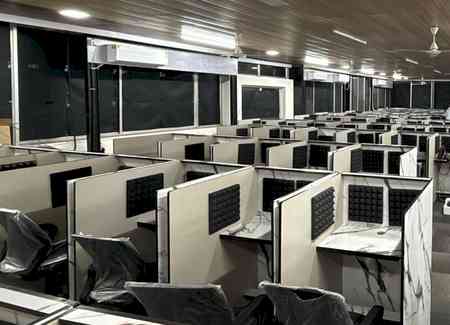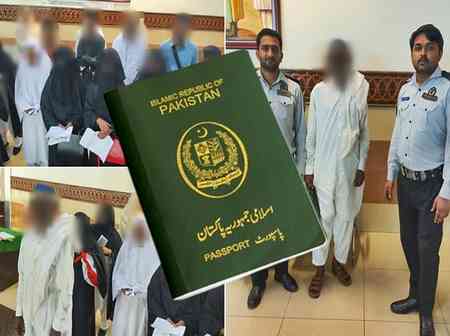Recurring Cloudbursts and Flash Floods Turn Himalayan Region into Disaster Hotspot
The Himalayan region is facing an alarming surge in extreme weather events, particularly deadly cloudbursts and flash floods, turning what were once tranquil tourist destinations into disaster-prone zones. Experts cite a combination of factors—from climate change and glacial retreat to unplanned urbanization and unchecked infrastructure development—as the driving forces behind the escalating crisis.

By Arvind Sharma
The Himalayan region is facing an alarming surge in extreme weather events, particularly deadly cloudbursts and flash floods, turning what were once tranquil tourist destinations into disaster-prone zones. Experts cite a combination of factors—from climate change and glacial retreat to unplanned urbanization and unchecked infrastructure development—as the driving forces behind the escalating crisis.
Many environmentalists point to global warming and the rapid retreat of Himalayan glaciers as key contributors to the increased frequency and intensity of flash floods. Others blame deforestation, unregulated urban sprawl along riverbanks and rivulets, obstruction of natural water flows, and changing monsoon patterns for the region's worsening vulnerability.
Climate scientists warn that climate change is intensifying precipitation, especially over the fragile and youngest Himalayan slopes. The region's steep terrain and orographic lift often result in sudden cloudbursts, while atmospheric instability and moisture-laden winds compound the threat. Unplanned infrastructure, including numerous hydroelectric projects and tourist resorts on unstable slopes, has only deepened the crisis. Deforestation, destabilized slopes, glacial melt, and soaring tourist footfall further aggravate the hazards.
Uttarkashi Cloudburst: A Village Washed Away in Minutes
The most recent tragedy struck on August 5, 2025, when a violent cloudburst over the upper Kheer Ganga catchment triggered a flash flood that devastated Dharali village in Uttarkashi, Uttarakhand. Within minutes, the entire village was buried under debris and mud. Officials confirmed at least four deaths, while over 100 people are still missing. The deluge destroyed dozens of homes, hotels, shops, and roads.
Emergency operations were launched by the Indian Army, NDRF, and SDRF, with around 150 troops mobilized for rescue work. So far, 130 people have been evacuated and 20 survivors rescued. Chief Minister Pushkar Singh Dhami described the rescue operations as being conducted on a "war footing," while Prime Minister Narendra Modi expressed condolences and assured full support from the Centre.
Himachal Pradesh: Ravaged by a Series of Cloudbursts
Between June 25 and July 1, Himachal Pradesh too experienced at least 11 cloudbursts across districts like Mandi, Kullu, Kangra, Shimla, and Solan. The state reported 63 deaths, with 17 in Mandi alone, and over 40 people missing. The resulting landslides and flash floods wreaked havoc on infrastructure, including roads, bridges, and even heritage sites, with estimated damages between ₹400 to ₹700 crore.
The early months of the monsoon in 2025 have been particularly lethal. Combined, Uttarakhand and Himachal Pradesh have reported over 130 deaths due to flash floods, landslides, and cloudbursts. Uttarakhand alone saw 70 fatalities in June, with many deaths caused by road accidents linked to weather-induced landslides.
In both states, dozens of roads remain blocked. Himachal reported 243 road closures, while in Uttarakhand, national and state highways were disrupted across key hill districts. The India Meteorological Department (IMD) escalated alerts from orange to red in multiple districts, leading to school closures, suspension of pilgrimages such as the Char Dham Yatra, and evacuations of tourists from vulnerable zones in both these states.
Let us recall the Major Himalayan Flood Disasters: 2010–2025 Timeline
June 2013 – Uttarakhand Disaster
Fatalities: ~6,054
The Worst disaster since 2004 tsunami in which 4,550 villages were affected and mass evacuation of 300,000 pilgrims was conducted.
February 2021 – Chamoli Avalanche and Flash Flood
Fatalities: Over 200 (83 confirmed dead, 121 missing)
An Ice-rock avalanche from Ronti Peak destroyed hydropower projects in Rishiganga and Dhauliganga.
October 2023 – South Lhonak Glacier Outburst, Sikkim
Fatalities: At least 92
It Was due to the glacial lake burst which destroyed a hydroelectric dam and flooded Teesta river valleys.
August 2023 – Monsoon Floods (Uttarakhand & Himachal)
Fatalities: ~72
These Massive cloudbursts causing ₹10,000 crore+ in damages, Himachal Pradesh was the worst hit.
August 2025 – Uttarkashi Cloudburst
Fatalities: 4 confirmed dead, 100+ missing
As Dharali village was wiped out; rescue efforts were ongoing in treacherous terrain.
In light of these mounting disasters, both central and state governments must act swiftly and decisively to work on a War-Footing Response required for future safety.
And the following measures are urgently needed:
Strengthen Early Warning Systems: Expand Doppler radar coverage, install micro-weather stations, and integrate real-time satellite monitoring with SMS/app-based alert systems for local communities.
Strict Zoning and Construction Regulations: Ban new construction near first-order streams, enforce ecological zoning, and decommission high-risk hydroelectric projects in fragile zones.
Disaster Preparedness at the Local Level: Conduct regular community drills, build local shelters, establish evacuation plans, and educate residents in high-risk hamlets.
District-Level Disaster Management Centers: Year-round disaster management units must be operational in every hill district to ensure preparedness for monsoon-triggered emergencies.
Restore the Ecosystem: Prioritize forestation, stabilize slopes, conserve wetlands, and promote water-retention techniques to reduce surface runoff and soil erosion.
The Himalayan region is no longer just a paradise for tourists; it is becoming a hotspot of climate-related catastrophes. If urgent, science-based, and people-centric measures are not adopted, the cost will be counted in lives lost and communities wiped off the map
(Author is Senior Columnist and Journalist, Dharamsala, Himachal Pradesh)
Views are personal


 Arvind Sharma
Arvind Sharma 










